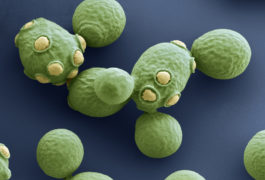Mouse study reveals overlooked target for autism therapies
Blocking one form of an enzyme implicated in autism eases unusual behaviors and seizures in mice missing a top autism gene.

Blocking one form of an enzyme implicated in autism eases unusual behaviors and seizures in mice missing a top autism gene.

Autistic people who carry mutations in a gene called PTEN have distinct behavioral and motor problems.

Injecting cells called interneurons into the brains of a mouse model of autism restores typical social behavior. But the reason for this effect is a puzzle.

A molecule made by mitochondria, the energy factories of cells, might help doctors forecast the impact of mutations in a top autism gene.

A compound derived from cruciferous vegetables, such as broccoli and kale, might limit the impact of certain mutations in an autism gene.

A website called GeneMatcher has helped researchers identify a new gene for intellectual disability, developmental delay and autism.

Tracking how roundworms crawl has enabled scientists to determine that many autism genes are involved in sensory processing and learning.

The largest autism sequencing study to date implicates 99 genes in the condition — but nearly half have a tighter link to intellectual disability or developmental delay.

Boys with autism have smaller heads, are shorter and weigh less at birth than typical children do — but all that changes by age 3.

Mutations in the gene PTEN that are tied to autism may be less harmful than those linked to a syndrome characterized by benign tumors.